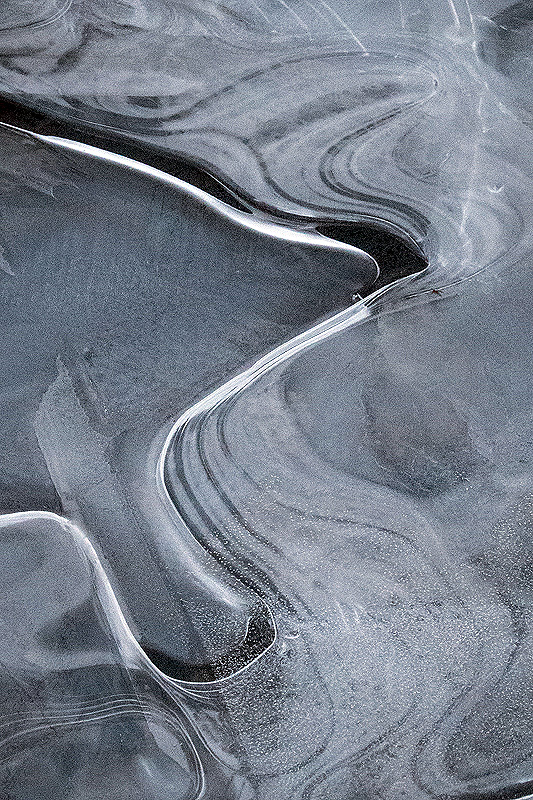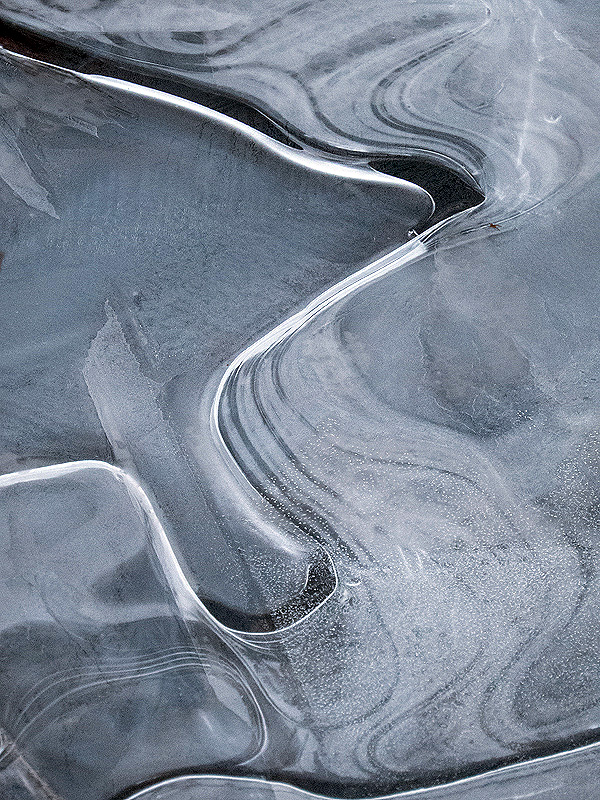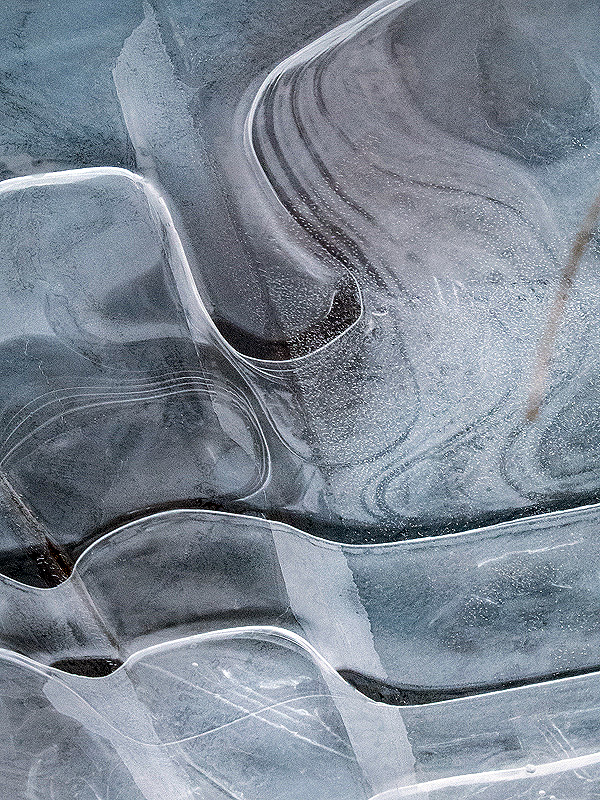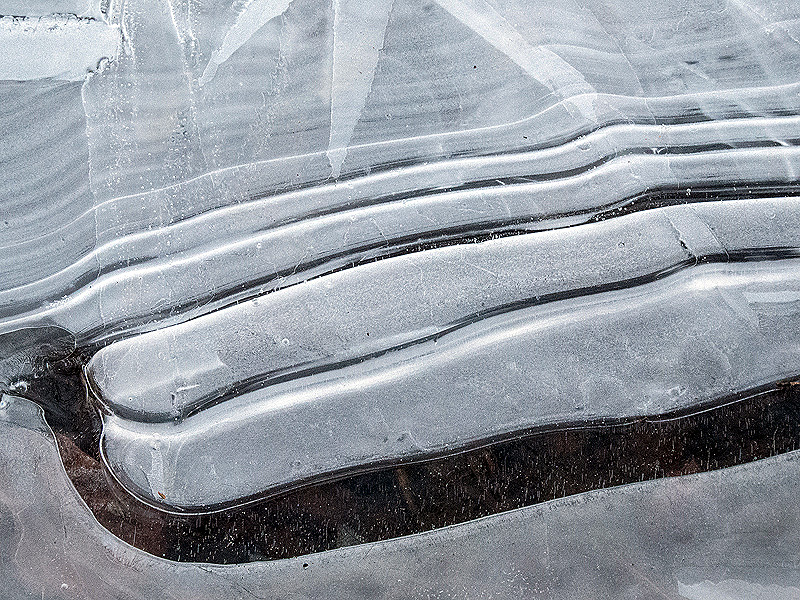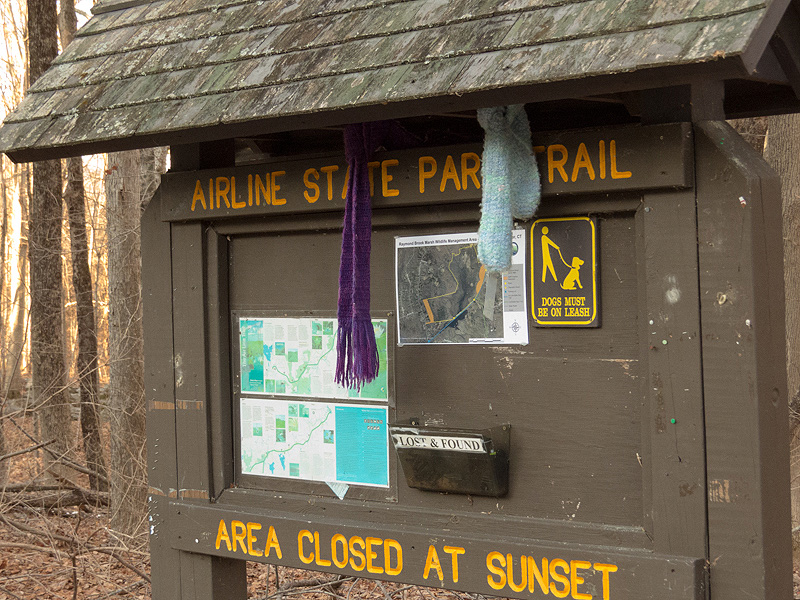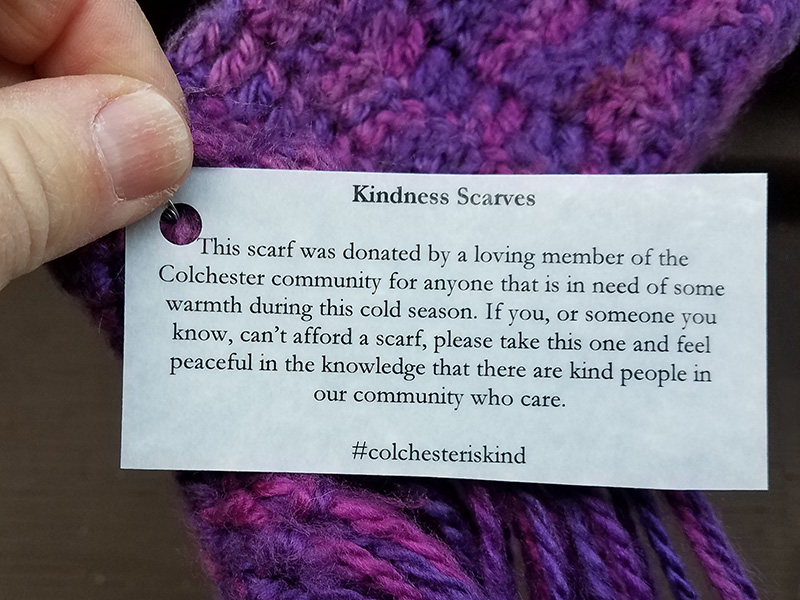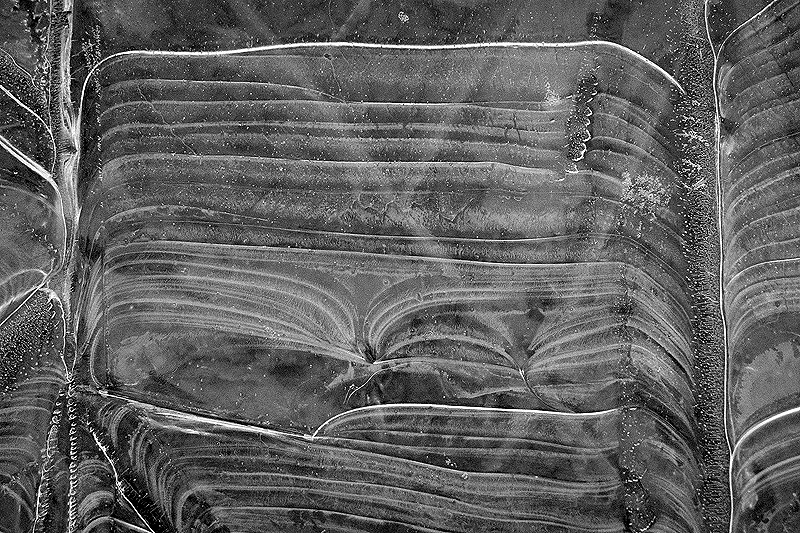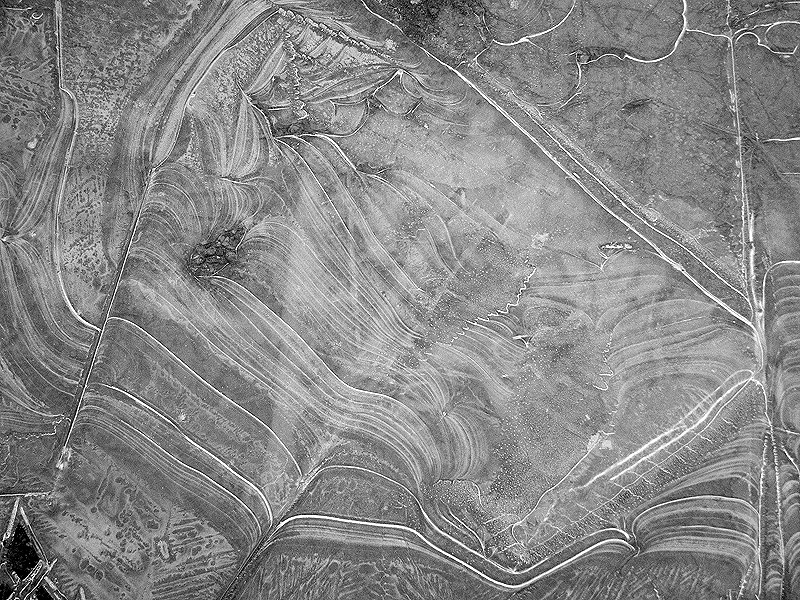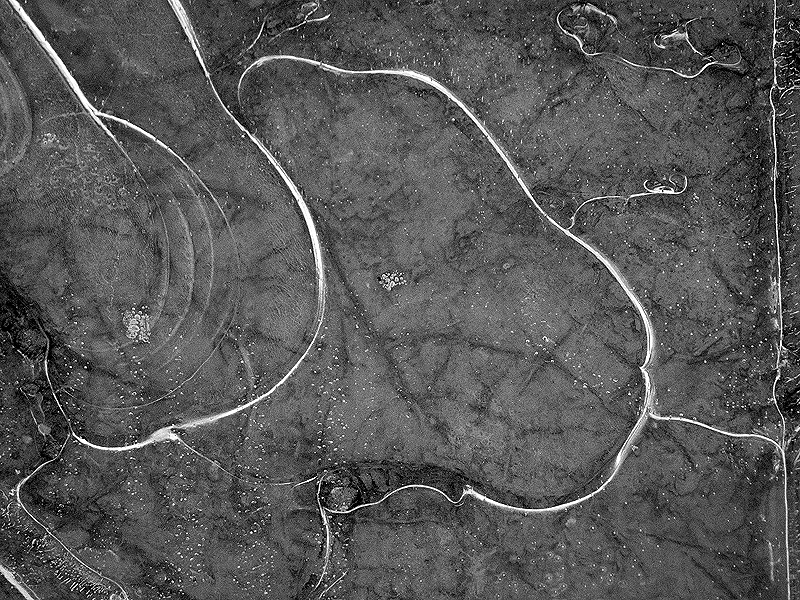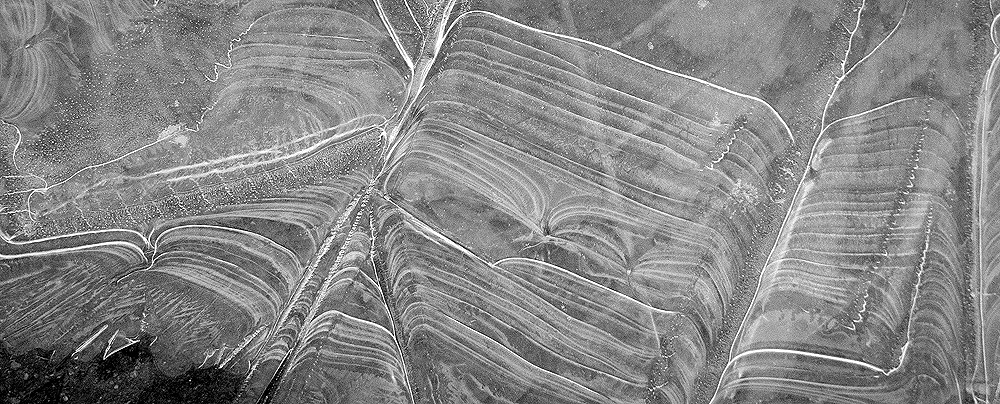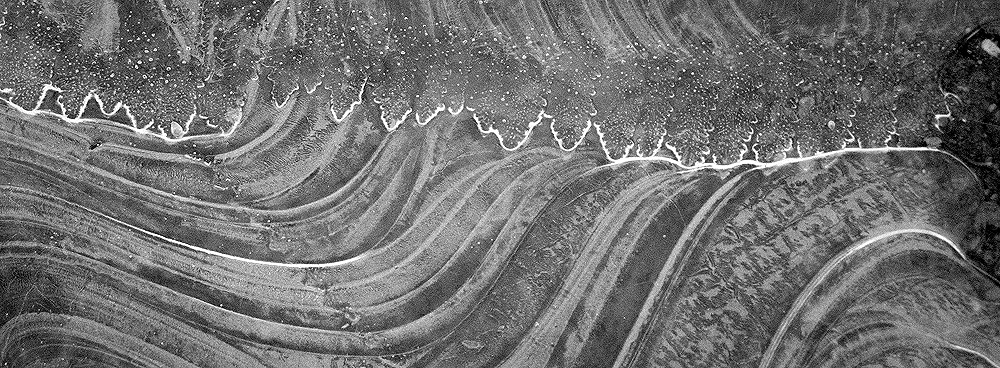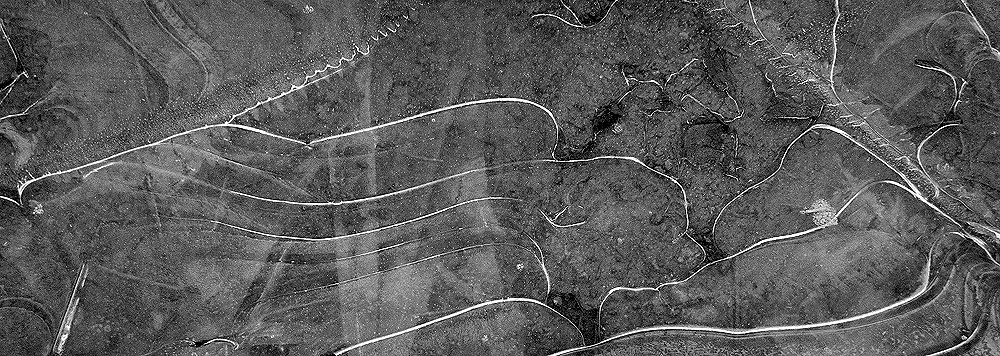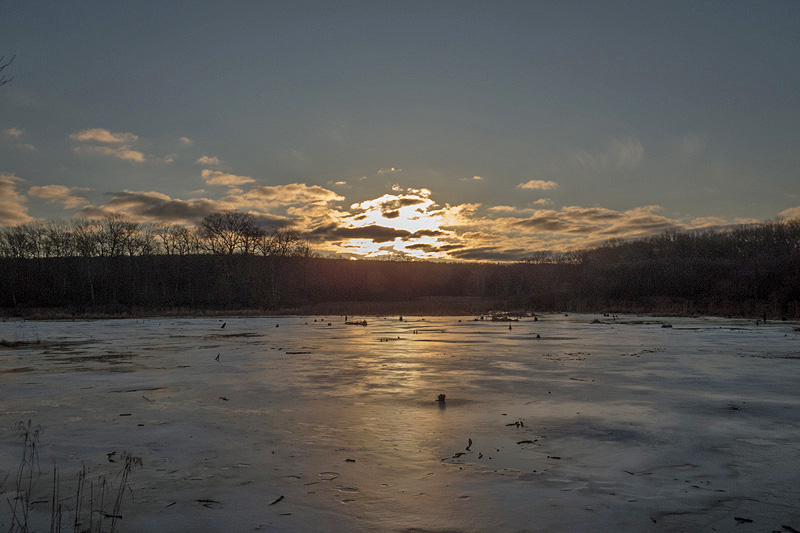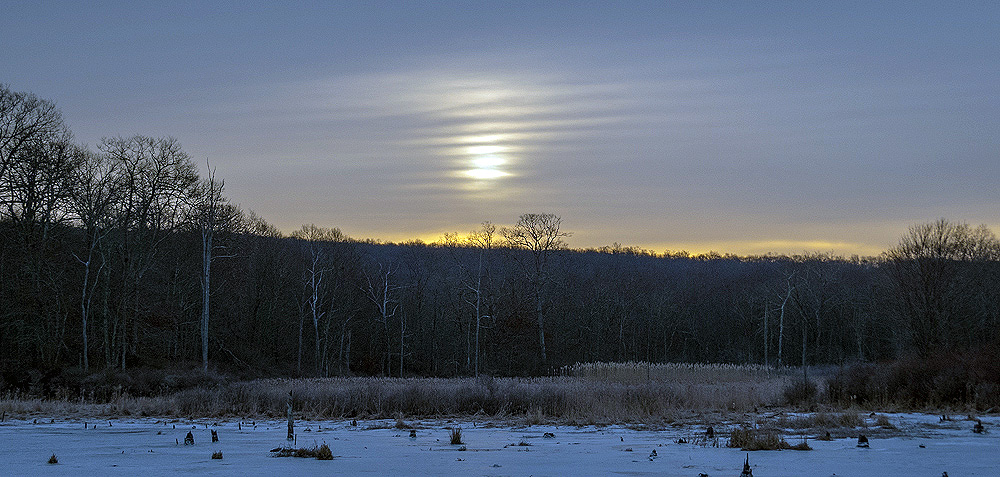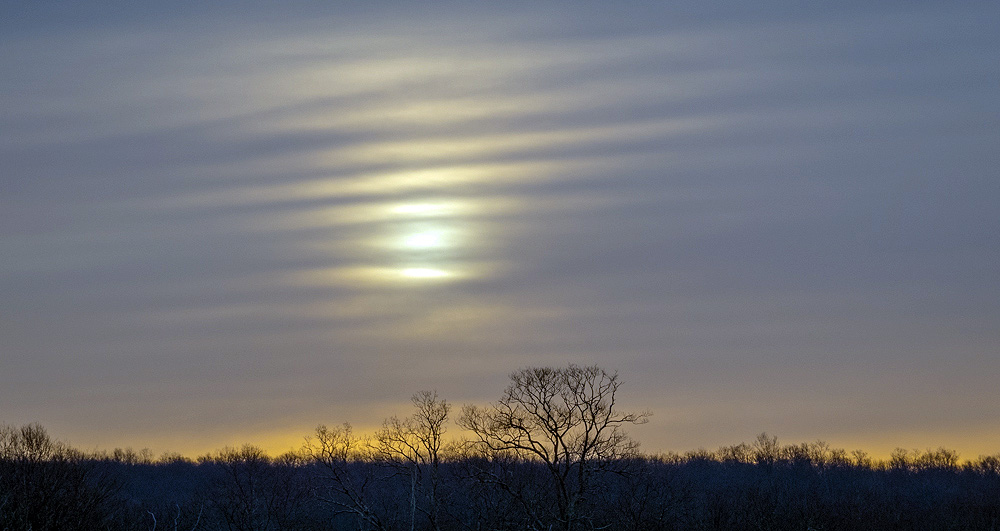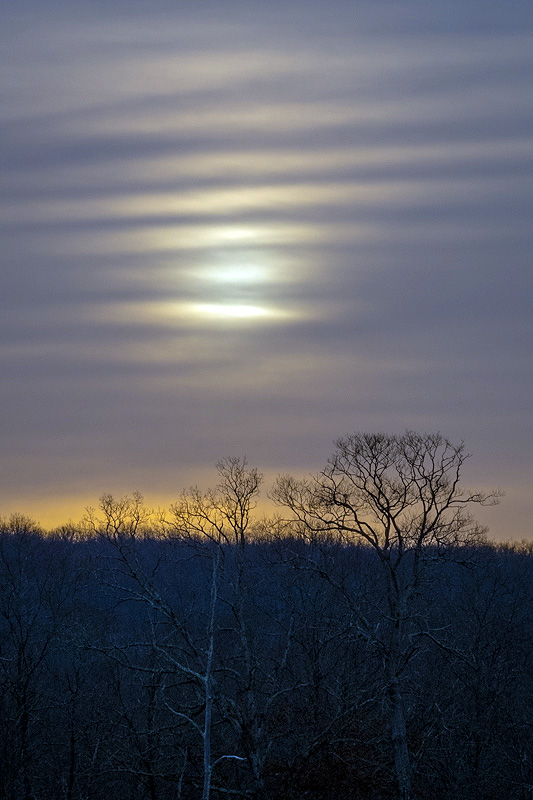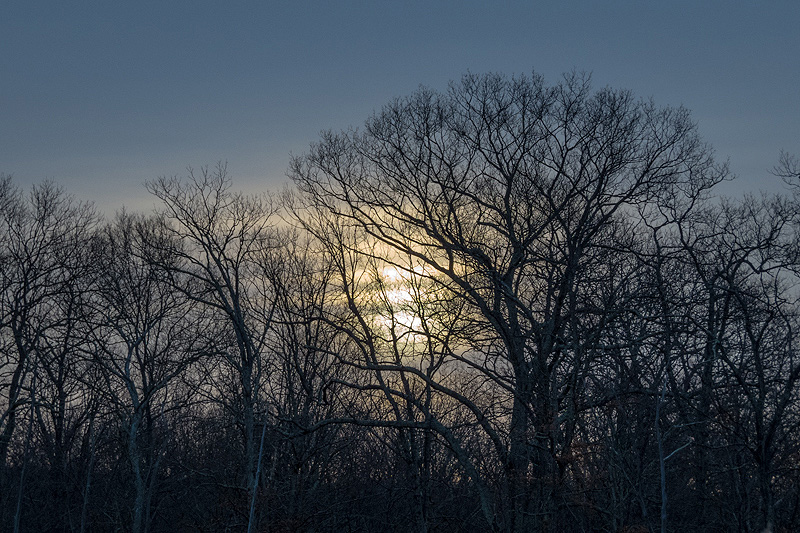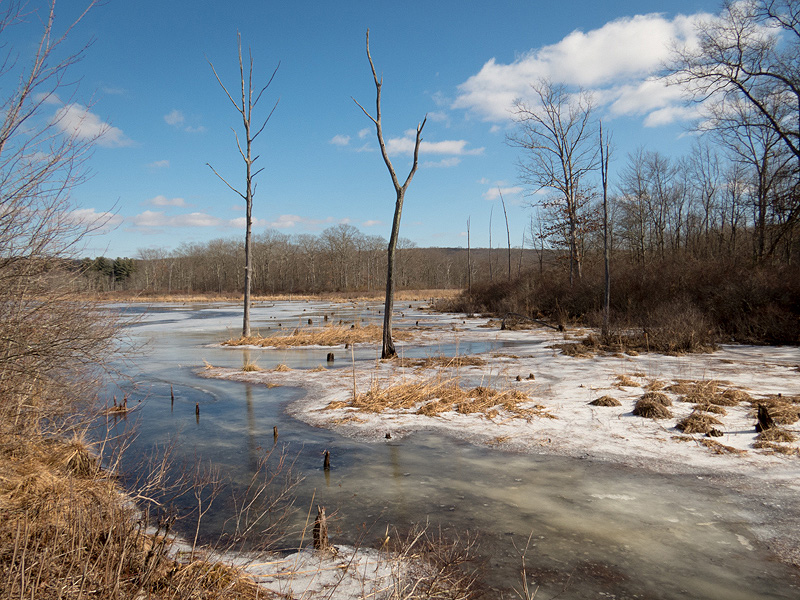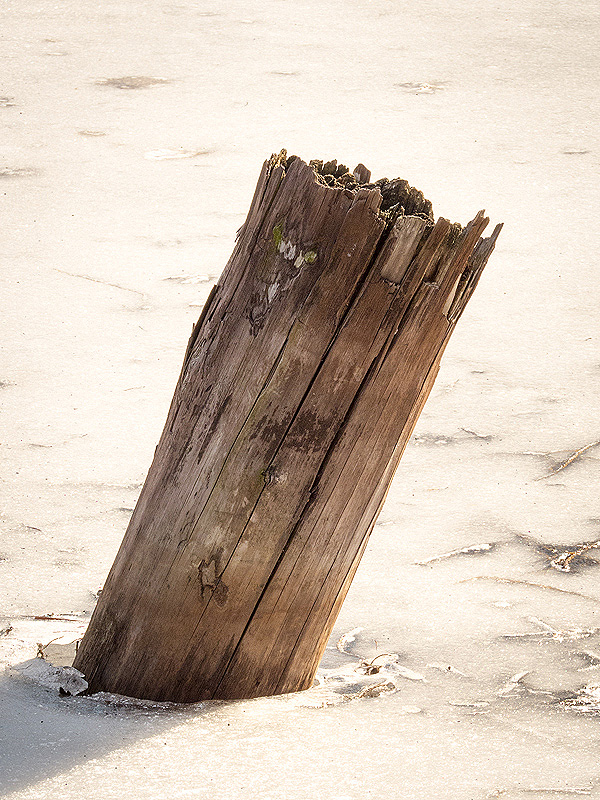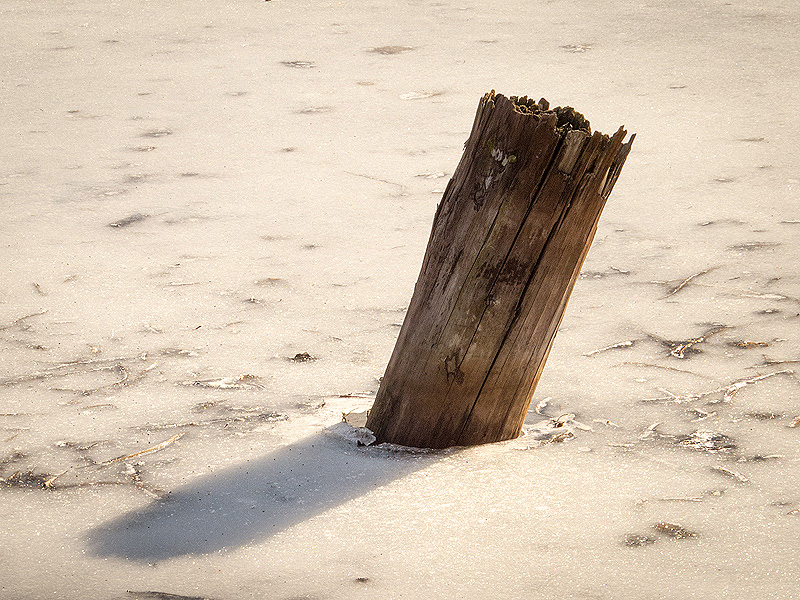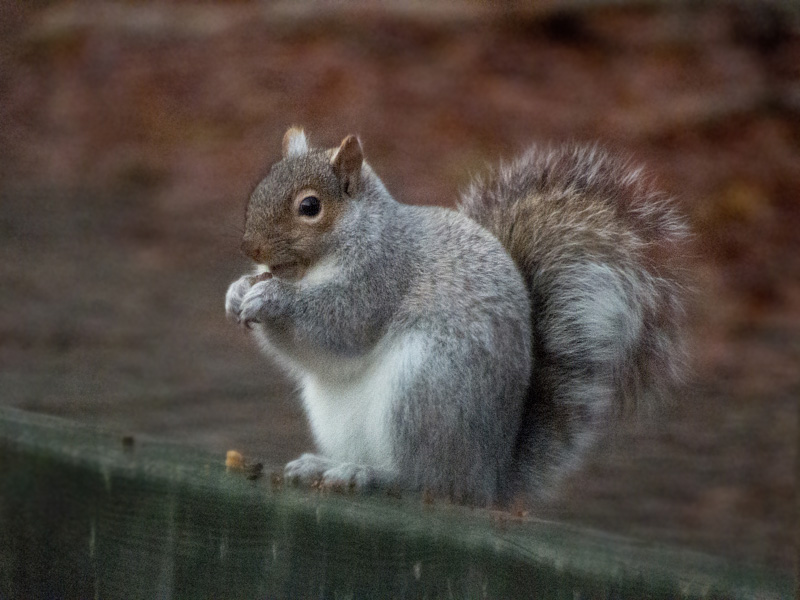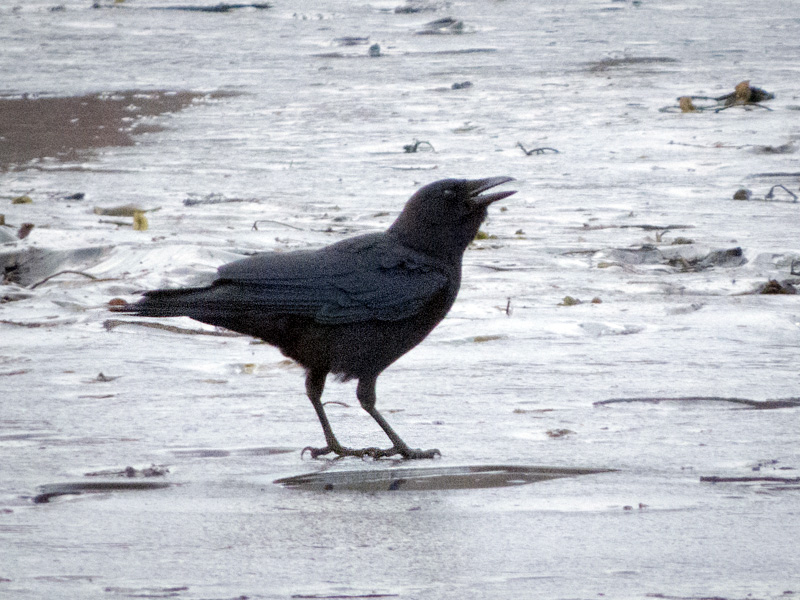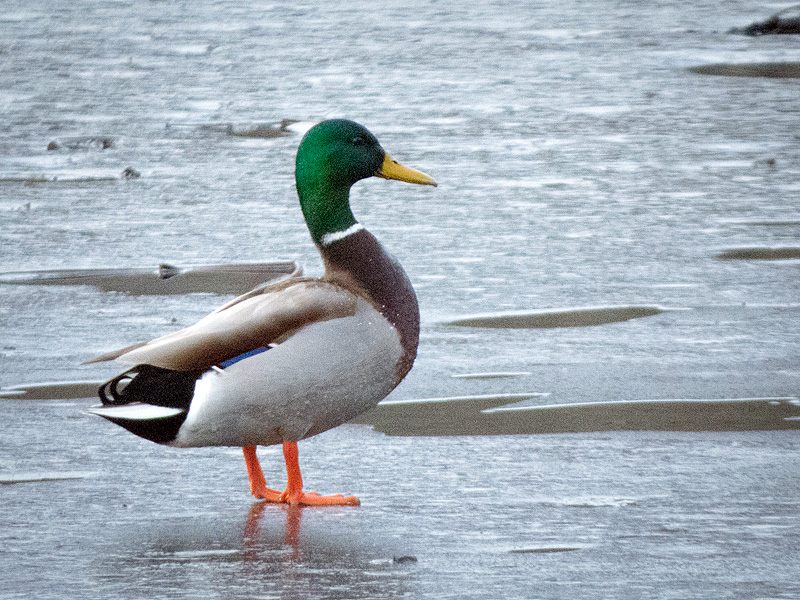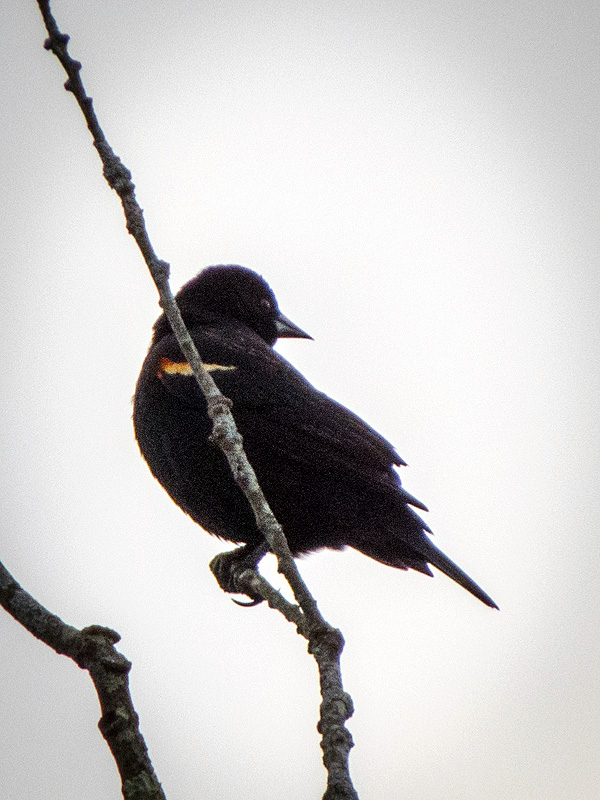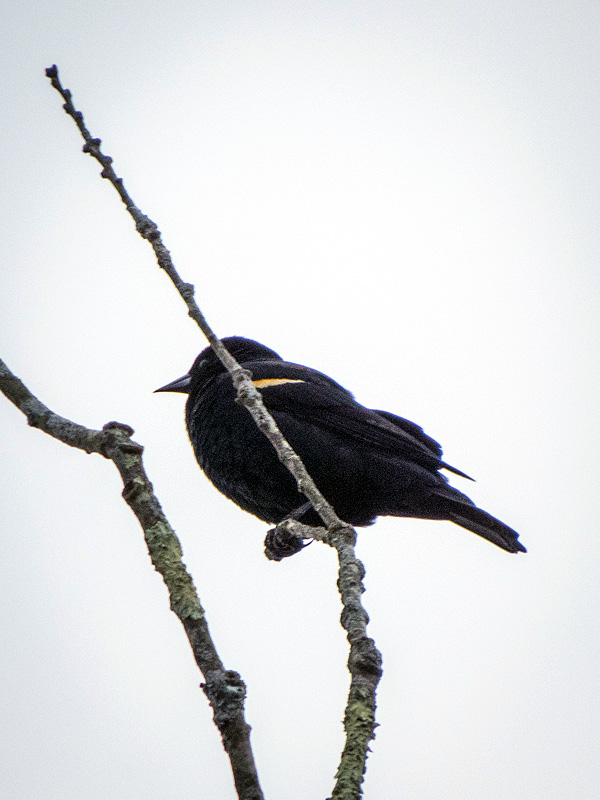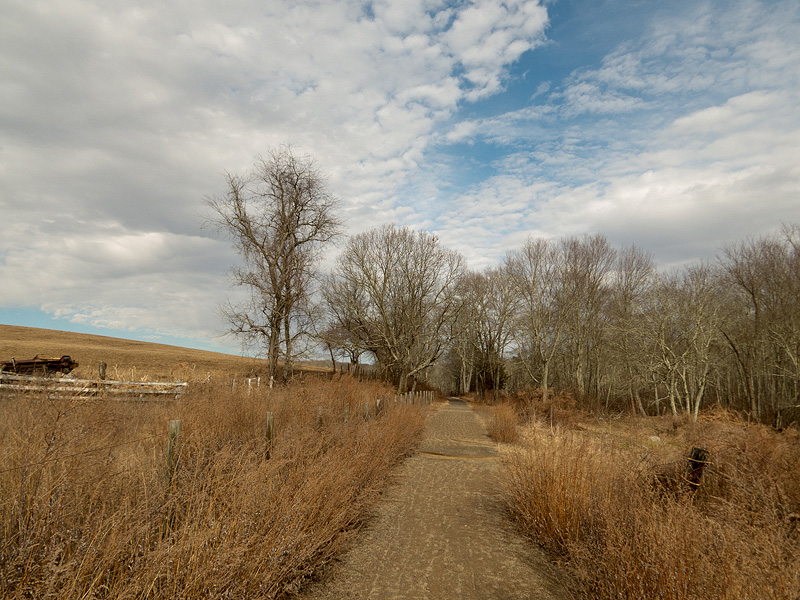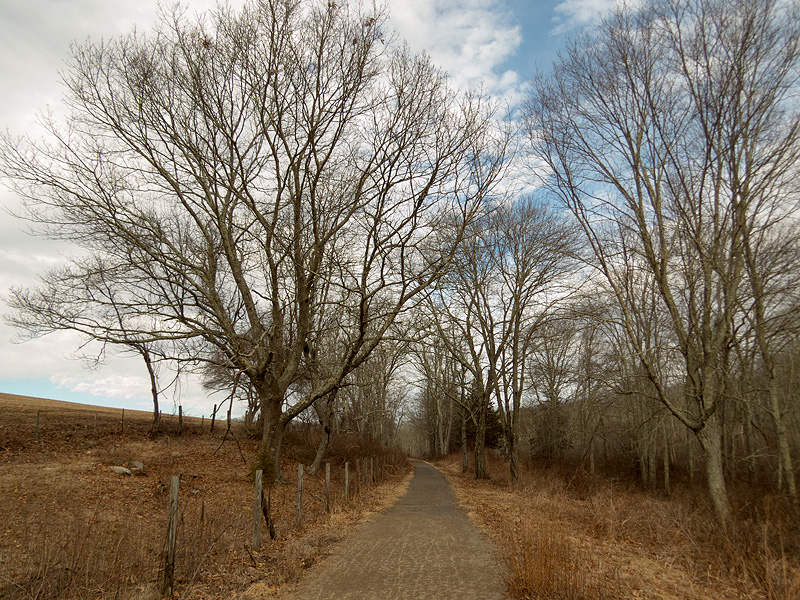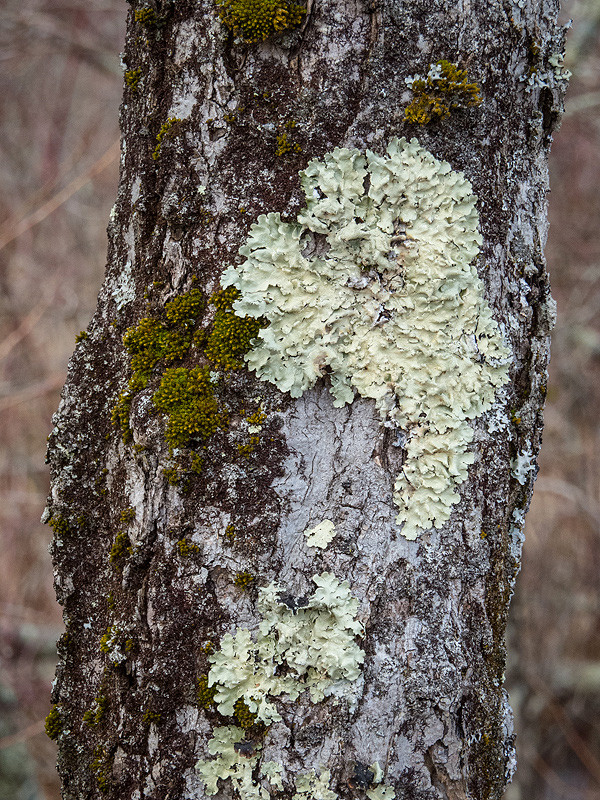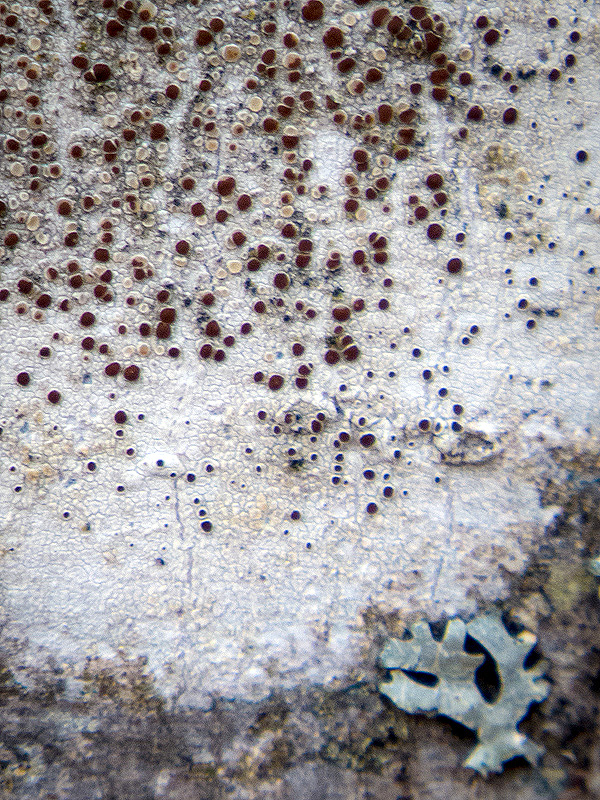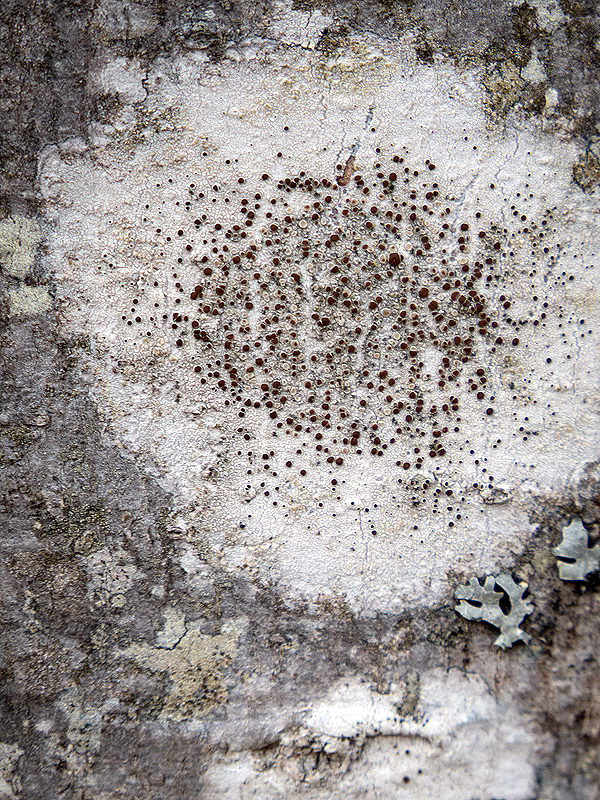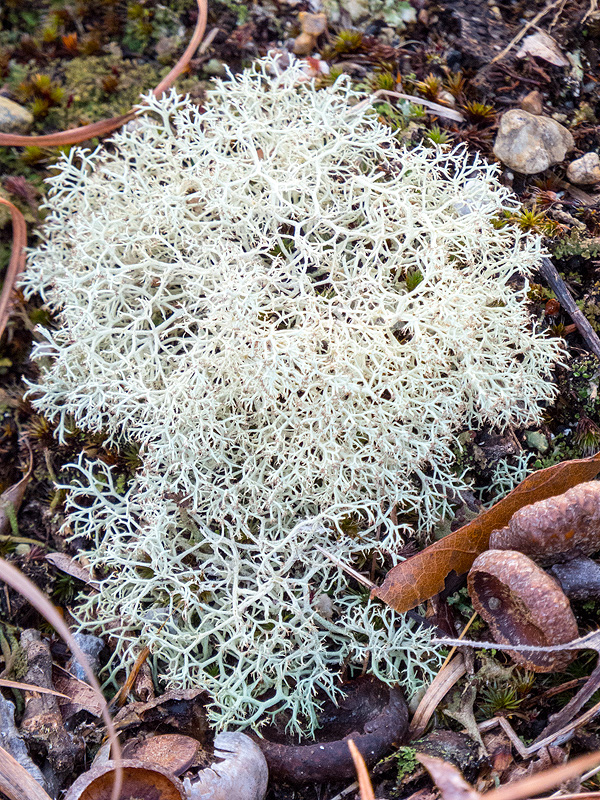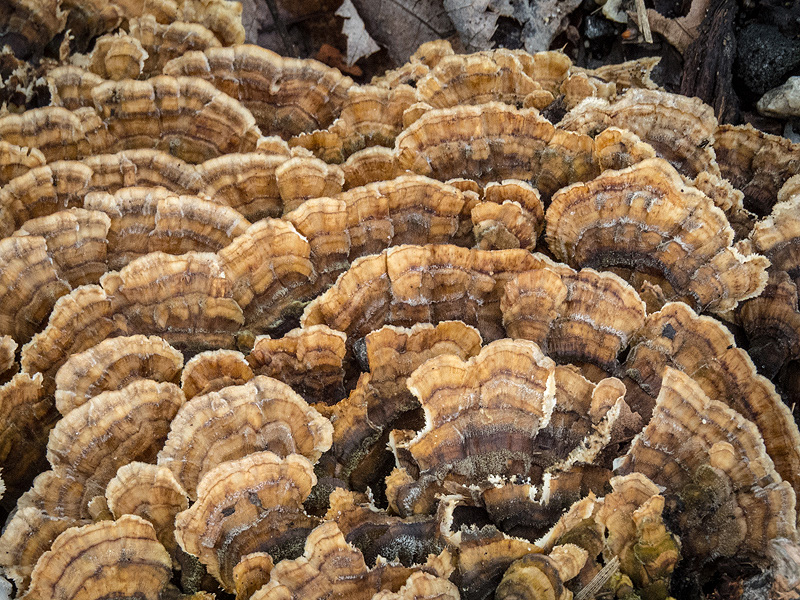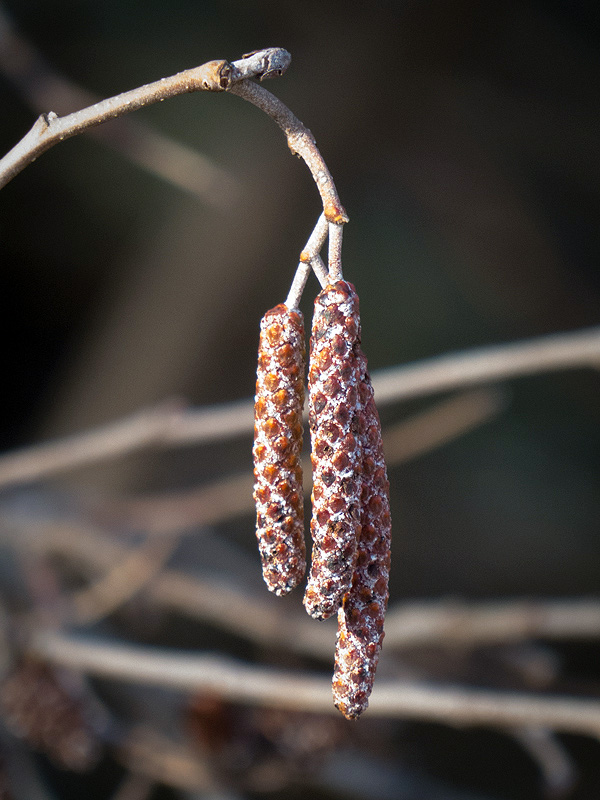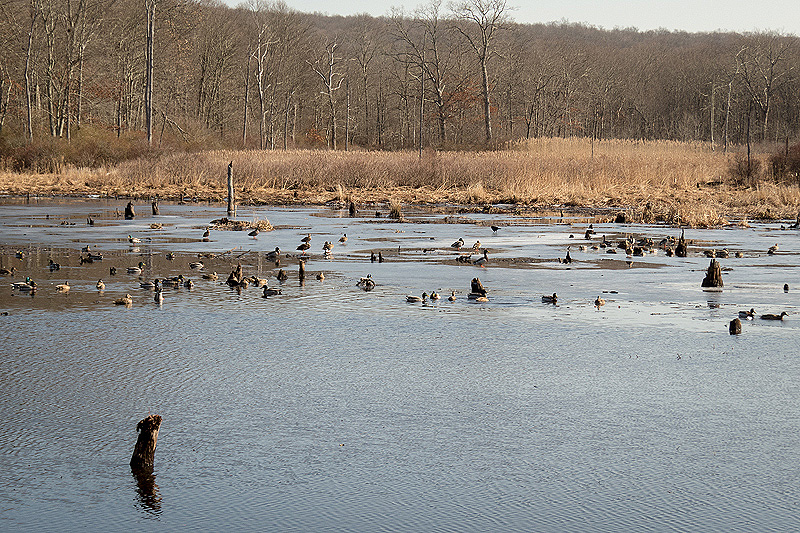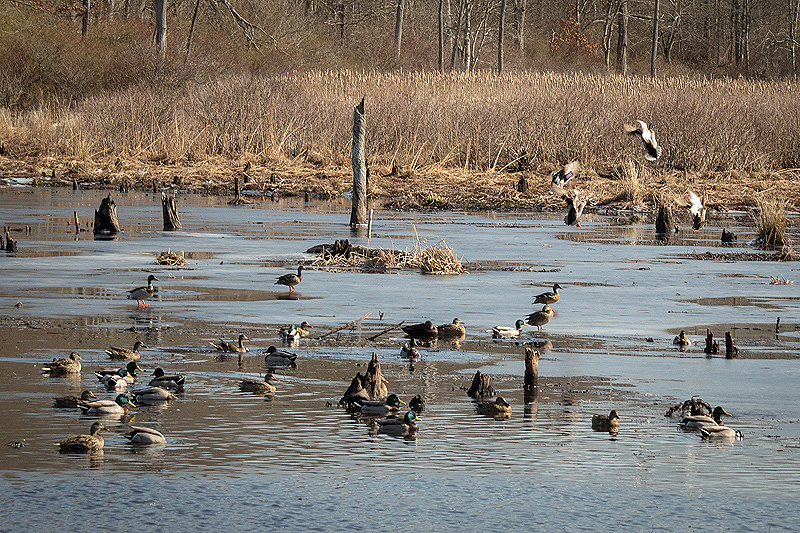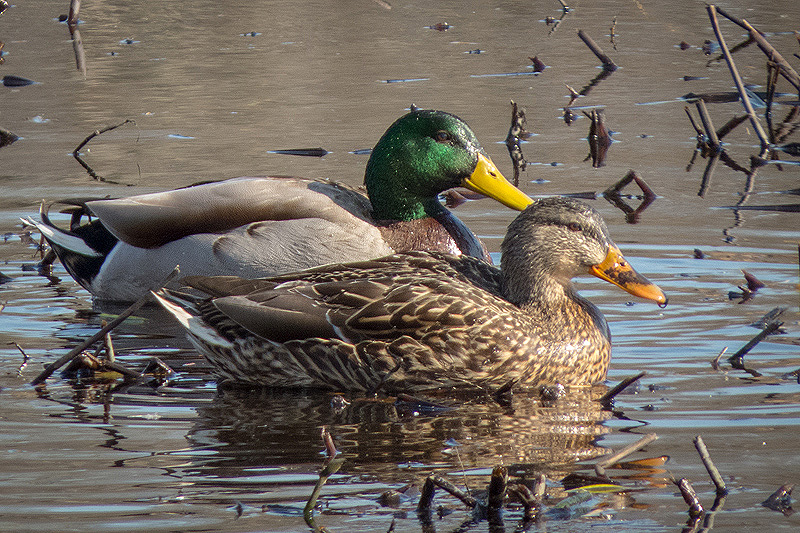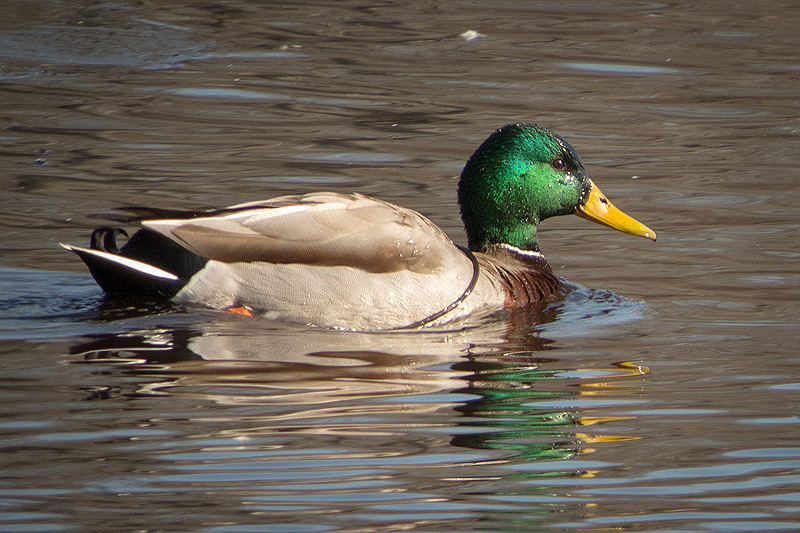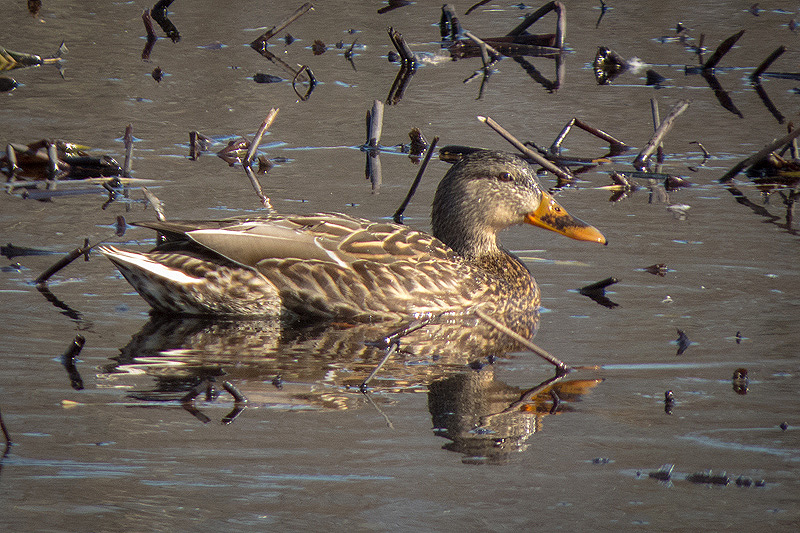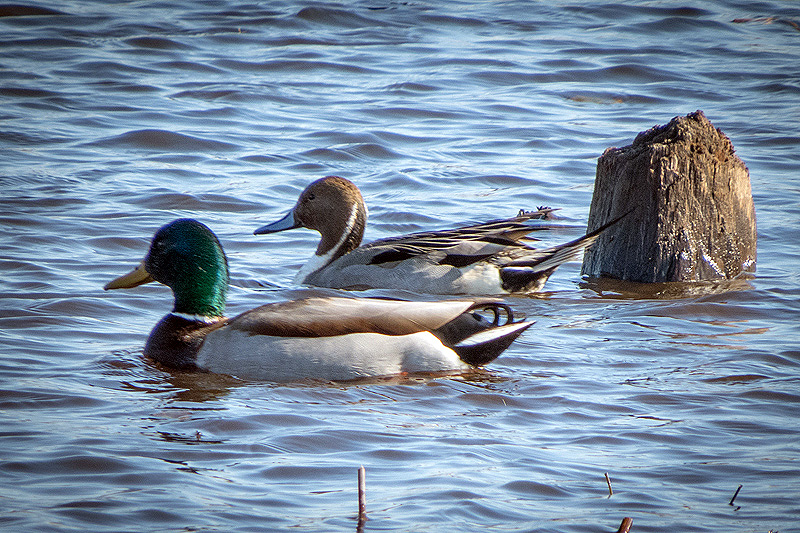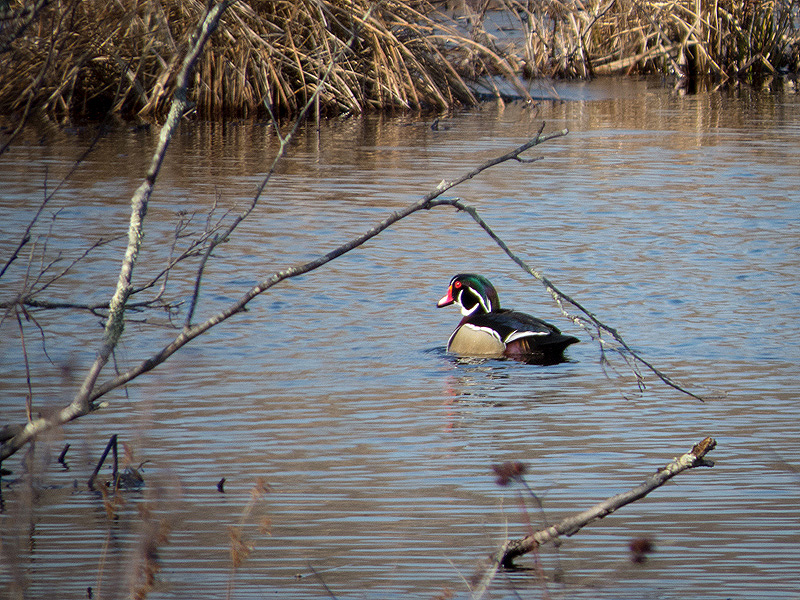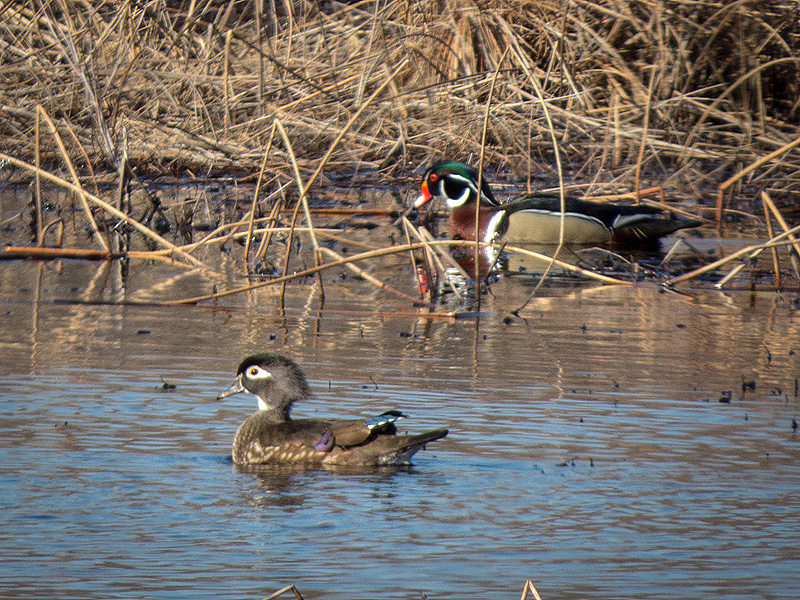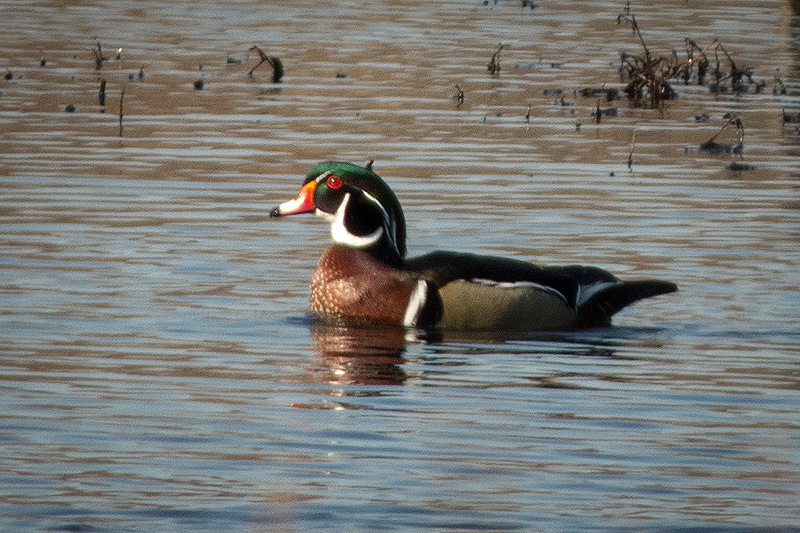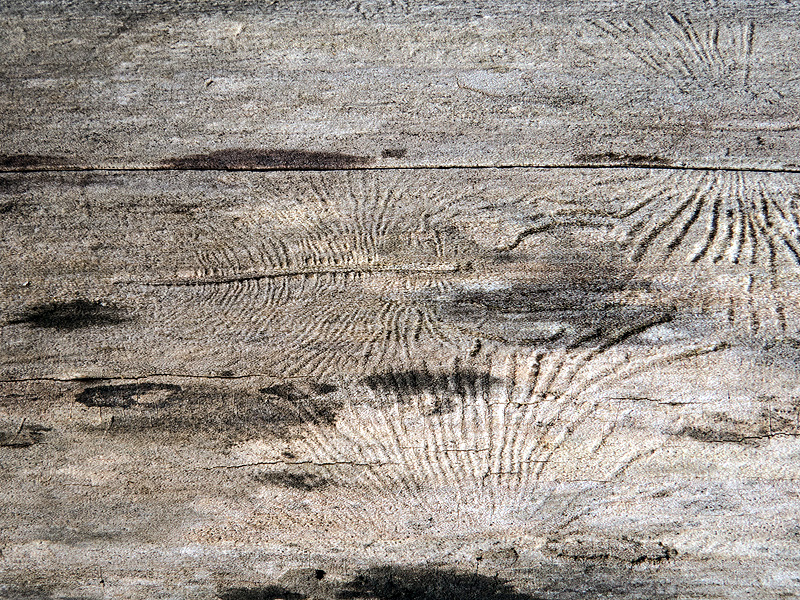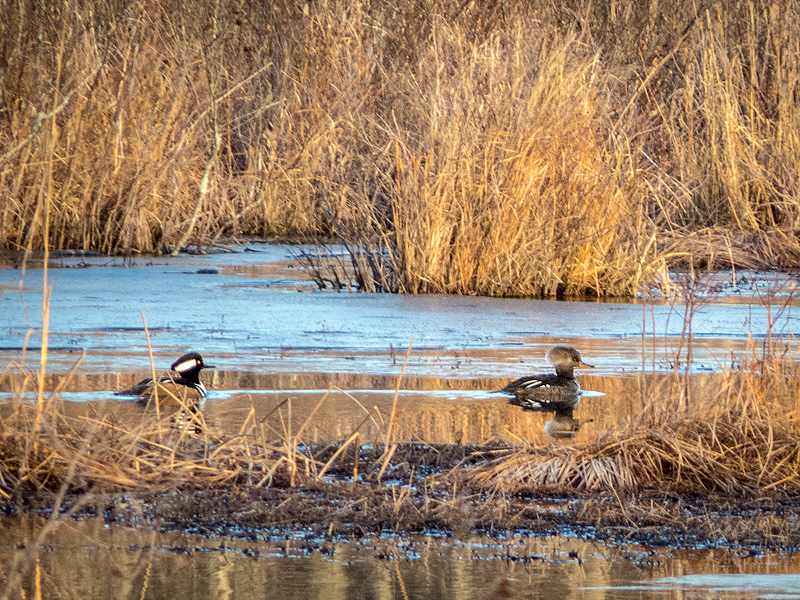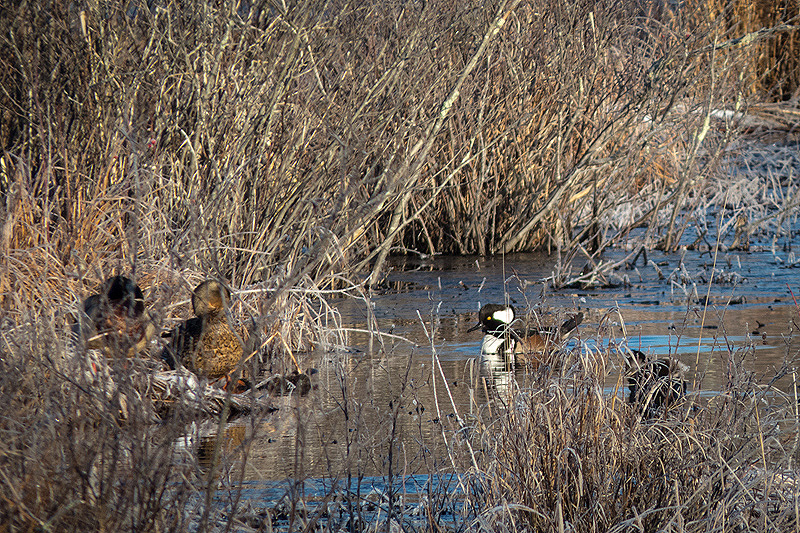Along the Air Line... 2017-2018 - Winter, Part 4 The Air Line Trail in Eastern Connecticut - Stan Malcolm Photos |
mHome Page Stan's FlickR Albums |
January 25th. Fifteen degrees. Patterns in thin ice. |
|
|
|
For several weeks, there have been nice scarves hanging at the Route 85 trail head. Lost and found items? No... |
January 29th. More ice patterns. |
|
|
|
|
|
|
February 5th. Back on the trail after a week off for a routine surgery. |
February 7th. The view to the east as a storm approaches from the west. Snow, sleet, and freezing rain predicted. |
|
|
|
February 8th. A midday walk after much of the ice on the trail had melted from yesterday's snow/sleet/rain event, plus falling temps overnight. |
I take pictures of this stump several times each year. |
Hmm, I'll bet if the ice were thicker, you could calibrate it as a sundial. |
February 12th. Warm temps and heavy rain over the weekend removed all traces of ice and snow on the trail. Eastern Gray Squirrel (Sciurus carolinensis) feeding on acorns at the Route 85 trail head. ("Noisy" picture in very low light.) |
One of four American Crows (Corvus imparatus) foraging on the marsh's remaining rough ice. |
A number of Mallards (Anas platyrhynchos) also out on the ice. |
The highlight though was the first Red-winged Blackbird (Agelaius phoeniceus) male I've seen this year at the marsh - and the earliest date ever over the seventeen Februaries I've walked the trail. You can just see its mostly covered red and yellow epaulets. |
It wasn't calling. No other blackbirds to call to, but for me a true harbinger of spring. |
An afternoon walk east from Cook Hill Road in Lebanon. |
|
Various Lichens. |
|
|
|
Turkey-tail fungi (Trametes versicolor). |
Alder (Alnus sp.) catkins still need time to elongate and reveal their pollen. |
February 14th. Early afternoon once the sun came out. Just a portion of the 100+ Mallards (Anas platyrhynchos) enjoying the open water. |
More ducks were dropping in. |
The Mallards all seemed to be paired up. |
|
|
Among the Mallards was a lone Northern Pintail duck (Anas acuta). |
Mallards weren't bothered by its company. |
On the channel side, a pair of Wood Ducks (Aix sponsa). Shy creatures that kept their distance. |
Females have a distinctive teardrop eye marking. |
|
Under bark of a tree that fell two years ago, bark beetle tracks. Note the center left set of tracks. The large, long, horizontal track was made by the adult female beetle, laying eggs along the way. Each larva burrowed and fed away from the central track. See how each track got wider as the beetle larva grew? When mature, the beetles burrowed out through the bark. |
Turkey-tail fungi (Trametes versicolor). |
February 17th. More Red-winged Blackbirds (Agelaius phoeniceus)seen, and calling now, though still far away. |
A pair of far distant Hooded Mergansers (Lophodytes cucullatus). |
February 19th. Despite ice over much of the marsh, the Hooded Mergansers (Lophodytes cucullatus) were still around, far distant on the channel side. |
A pair oif Mallards (Anas playtyrhynchos) on a hummock nearby. |
